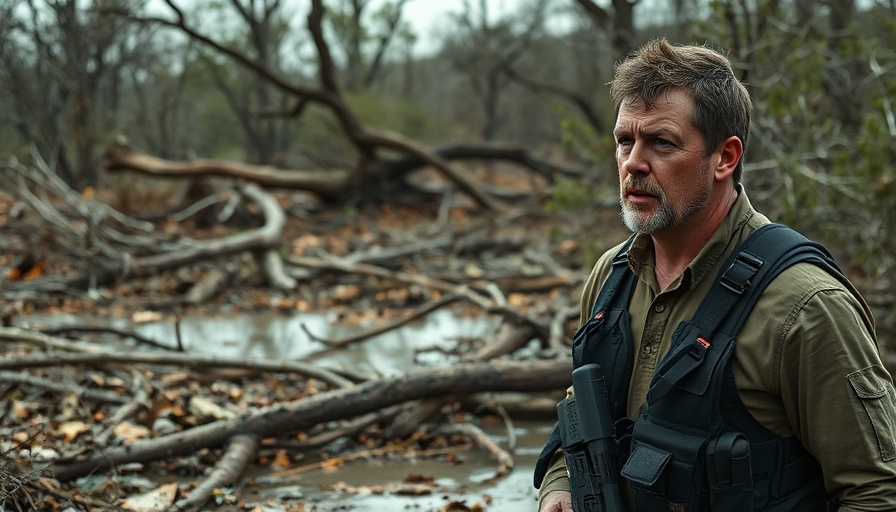
Tragic Flooding in Texas Hill Country: Impact and Response
The Texas Hill Country has faced devastating flooding following heavy rainfall over the July 4th weekend, leading to a catastrophic loss of life and property. As of July 6, 2025, officials confirmed that the flooding has claimed at least 70 lives, surpassing the tragic toll of Hurricane Harvey in 2017, which accounted for 68 deaths. The search for survivors continues, particularly for 11 missing girls and their counselor from Camp Mystic, a local Christian camp.
An All-Out Search Effort: Communities Rally
In the wake of this disaster, search and rescue operations have mobilized more than 400 first responders from over 20 agencies. Sheriff Larry Leitha shared the grim news that among the deceased, there are 21 children and 38 adults, with several individuals still to be identified. The situation remains dire as officials warn that the number of unaccounted persons may continue to rise due to the influx of visitors during the holiday weekend.
Dalton Rice, city manager of Kerrville, articulated the sentiment encapsulating the effort: "We have increased our number of personnel who are navigating the really challenging shores along the bank line, but we’re continuing to make progress." There have already been over 850 rescues amid the ongoing chaos, a testament to the tireless efforts of first responders.
Government Response: Federal Assistance and Future Preparations
Governor Greg Abbott has been proactive, expanding a disaster declaration to include several affected counties and has called for federal assistance, which has since been granted by President Donald Trump. This declaration will enable victims access to vital resources like temporary housing, low-cost loans, and support for home repairs. Such influxes of federal aid are crucial for recovery, especially given the extensive damage our communities face.
Moreover, amid this calamity, there is room for critical reflection on the effectiveness of emergency management systems. U.S. Homeland Security Secretary Kristi Noem indicated that the U.S. Coast Guard and Border Patrol have directly participated in the search efforts, highlighting the collaborative response from federal organizations. There are also discussions about upgrading the National Weather Service's technology for better predictive capacities, considering the staffing challenges faced in recent years.
Community Resilience: The Road Ahead
The path to recovery will be a long one, but the resilience of Texas communities remains unshakeable. As families look for their loved ones, social media has become a lifeline through which people share information and seek help. This digital outreach serves as an emotional beacon in an otherwise hopeless scenario, bringing the community together in shared mourning and determination.
The local government has urged citizens in flood-prone areas to remain cautious, especially with forecasts for additional rainfall, potentially exacerbating already dangerous circumstances. It’s essential for families to stay informed about evacuation orders and safety measures.
A Call for Awareness and Better Systems
In reviewing the events leading up to this tragedy, there are discussions about the adequacy of warnings issued beforehand. The criticisms directed at the National Weather Service underline a pressing need for reform. Many are questioning whether the cuts inflicted by the Trump administration on forecasting staff have played a role in the system's response efficiency.
In the face of natural disasters, continuous improvements to warning systems, community preparedness, and education on flood risks will prove valuable. As the community begins to grieve and recover, it is crucial that local and federal officials commit to improving emergency response to better protect lives in future occurrences.
Conclusion: Remembering Lives Lost and Preparing for Tomorrow
As we continue to seek justice for those lost and support for the survivors, it’s vital that we keep these discussions at the forefront. Community engagement, governmental support, and ongoing responsiveness to climate patterns will be key to ensuring safety in the Texas Hill Country moving forward. Remembering those lost in the floods highlights not only the fragility of life but also the strength found in community solidarity.
 Add Row
Add Row  Add
Add 




 Add Row
Add Row  Add
Add 


Write A Comment